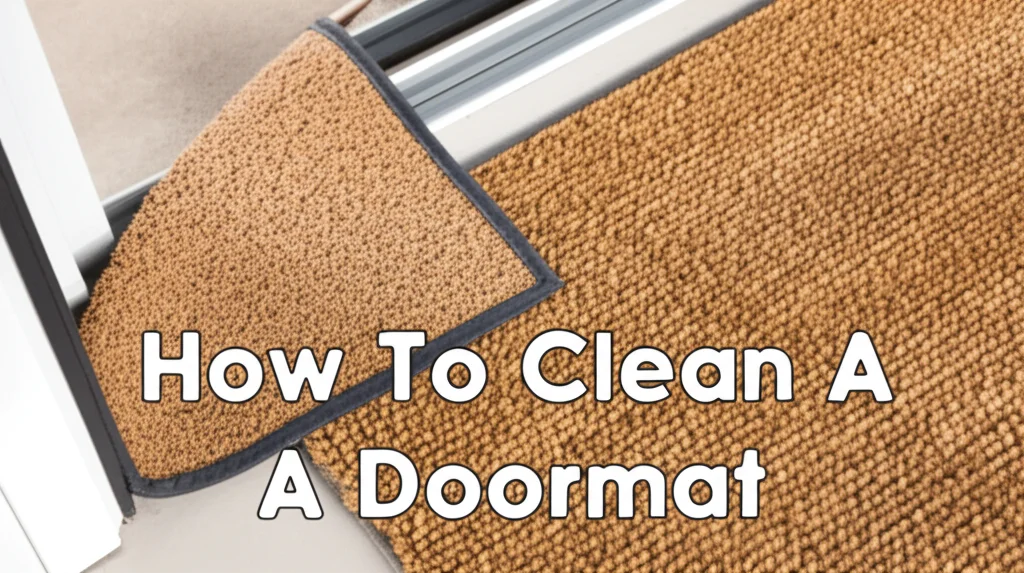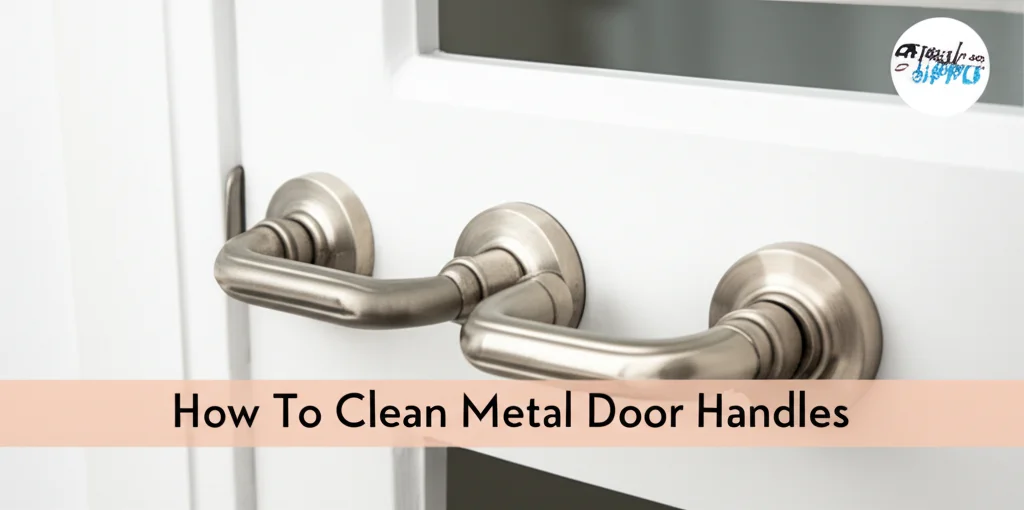· Home Cleaning · 7 min read
How To Clean The Front Doormat

A Sparkling Welcome: How To Clean Your Front Doormat
Is your front doormat looking a little worse for wear? It’s the first thing guests see, and it takes a beating from shoes tracking in dirt, mud, and debris. A clean doormat isn’t just about appearances; it actually helps keep your home cleaner by trapping those messes before they get inside. This article will guide you through everything you need to know about how to clean your front doormat, keeping it fresh and functional. We’ll cover different materials, cleaning methods, and preventative measures to ensure your doormat always makes a great first impression. Let’s get started!
Takeaway:
- Regularly shake or vacuum your doormat.
- Choose the right cleaning method based on the material.
- Deep clean your doormat a few times a year.
- Allow the doormat to dry completely before placing it back.
A clean doormat is a simple way to enhance your home’s curb appeal and protect your floors. It’s a small effort that makes a big difference.
Why Regular Doormat Cleaning Matters
Think about everything your doormat encounters daily. Rain, snow, dirt, leaves, and countless footsteps all contribute to a build-up of grime. Ignoring this build-up doesn’t just make your entryway look untidy; it reduces the doormat’s effectiveness. A clogged doormat can’t trap as much dirt, meaning more gets tracked into your home. Regular cleaning extends the life of your doormat and keeps your floors cleaner, saving you time and effort in the long run.
Plus, a clean doormat creates a welcoming atmosphere for visitors. It shows you care about your home and the impression you make on guests. Don’t underestimate the power of a little cleanliness!
Identifying Your Doormat Material
Before you start cleaning, it’s crucial to know what your doormat is made of. Different materials require different cleaning approaches. Here are some common doormat materials:
- Coir (Coconut Fiber): This is a popular, durable option known for its excellent scraping ability.
- Rubber: Often used as a backing or as the entire mat, rubber is waterproof and easy to clean.
- Synthetic Fibers (Polypropylene, Polyester): These are affordable, weather-resistant, and come in various colors and designs.
- Cotton: Softer and more absorbent, cotton doormats are best suited for covered entryways.
Check the label on your doormat if possible. If not, a quick visual inspection and feel test can usually help you determine the material. Knowing your doormat’s material will prevent damage during cleaning.
Simple Daily & Weekly Maintenance
Consistent, small efforts can prevent major cleaning headaches. Here’s how to keep your doormat looking its best with minimal effort:
- Shake it Out: Daily or every other day, take your doormat outside and give it a good shake. This removes loose dirt and debris.
- Vacuum Regularly: Once a week, vacuum your doormat using a brush attachment. This gets rid of embedded dirt and dust.
- Spot Clean Spills: Address spills immediately. Blot (don’t rub!) with a clean cloth and mild detergent.
- Rotate Your Doormat: If your doormat is exposed to direct sunlight, rotate it periodically to prevent uneven fading.
These simple steps will significantly reduce the need for deep cleaning and extend the life of your doormat.
Deep Cleaning Methods for Different Doormat Types
Now, let’s dive into deep cleaning methods tailored to specific doormat materials.
Cleaning Coir Doormats
Coir doormats are durable but can become brittle over time. Here’s how to clean them effectively:
- Remove Loose Dirt: Shake or vacuum the doormat thoroughly.
- Gentle Wash: Mix mild dish soap with warm water. Use a soft brush to scrub the doormat in the direction of the fibers.
- Rinse Thoroughly: Rinse with clean water, ensuring all soap residue is removed.
- Dry Completely: Allow the doormat to air dry completely in a well-ventilated area. Avoid direct sunlight, which can cause it to become brittle.
Avoid harsh chemicals or abrasive cleaners, as these can damage the coir fibers. If you’re looking for ways to keep your floors clean, consider checking out https://beacleaner.com/how-to-clean-luxury-vinyl-plank-flooring/ for more tips.
Cleaning Rubber Doormats
Rubber doormats are incredibly easy to clean due to their waterproof nature.
- Hose it Down: Simply hose down the doormat with water.
- Soap and Scrub: Add a small amount of dish soap and scrub with a brush.
- Rinse and Dry: Rinse thoroughly with water and allow to air dry.
For stubborn stains, you can use a mild all-purpose cleaner. Rubber is very resilient, so you don’t need to be overly gentle.
Cleaning Synthetic Fiber Doormats
Synthetic fiber doormats are versatile and relatively easy to maintain.
- Vacuum: Start by vacuuming the doormat to remove loose dirt.
- Mild Detergent Solution: Mix mild detergent with warm water.
- Gentle Scrubbing: Use a soft brush to scrub the doormat gently.
- Rinse and Dry: Rinse thoroughly with clean water and allow to air dry completely.
Avoid using hot water, as it can damage some synthetic fibers. If you’re dealing with tough stains on other surfaces, you might find https://beacleaner.com/how-to-clean-floor-grout-without-scrubbing/ helpful.
Cleaning Cotton Doormats
Cotton doormats require a bit more care as they are more absorbent and prone to shrinking.
- Check the Label: If machine washable, follow the instructions on the label.
- Hand Wash (Recommended): Hand wash in cool water with mild detergent.
- Gentle Rinse: Rinse thoroughly with cool water.
- Air Dry: Lay flat to air dry. Avoid direct sunlight and heat.
Cotton doormats are best suited for covered entryways to protect them from the elements.
Dealing with Stubborn Stains
Sometimes, a simple cleaning isn’t enough. Here’s how to tackle stubborn stains:
- Mud: Let the mud dry completely, then vacuum or brush it off. Follow with a gentle wash as described above.
- Oil: Sprinkle baking soda on the stain to absorb the oil. Let it sit for 30 minutes, then vacuum and wash.
- Grease: Similar to oil, use baking soda to absorb the grease before washing.
- Mold/Mildew: Mix equal parts water and white vinegar. Spray on the affected area, let it sit for 15 minutes, then scrub and rinse.
Always test any cleaning solution in an inconspicuous area first to ensure it doesn’t damage the doormat. If you’re concerned about mold elsewhere in your home, you might want to read https://beacleaner.com/how-to-remove-mold-from-painted-walls/.
FAQ: Your Doormat Cleaning Questions Answered
Q: How often should I replace my doormat?
A: The lifespan of a doormat depends on the material and usage. Generally, coir and rubber doormats last 2-5 years, while synthetic and cotton doormats may need replacing every 1-3 years. Replace it when it becomes excessively worn or damaged.
Q: Can I use a pressure washer on my doormat?
A: While some durable rubber doormats can withstand a low-pressure wash, it’s generally not recommended. The high pressure can damage the fibers and backing.
Q: Is it okay to put my doormat in the washing machine?
A: Some synthetic and cotton doormats are machine washable, but always check the label first. Use a gentle cycle and cold water.
Q: How can I prevent my doormat from sliding around?
A: Use a non-slip rug pad underneath your doormat to keep it securely in place.
Q: What’s the best way to dry a doormat quickly?
A: Air drying is best to prevent damage. However, you can speed up the process by placing it in a well-ventilated area or using a fan.
Conclusion: A Welcoming Entryway Starts with a Clean Doormat
Keeping your front doormat clean is a simple yet effective way to maintain a tidy home and make a positive first impression. By understanding your doormat’s material and following the appropriate cleaning methods, you can extend its life and keep it looking its best. Remember to incorporate regular maintenance into your routine – a quick shake or vacuum can go a long way! Don’t let a dirty doormat detract from your home’s curb appeal. Take a few minutes to clean it, and enjoy a welcoming entryway for years to come. For more cleaning tips and tricks, explore our other articles at https://www.beacleaner.com.




